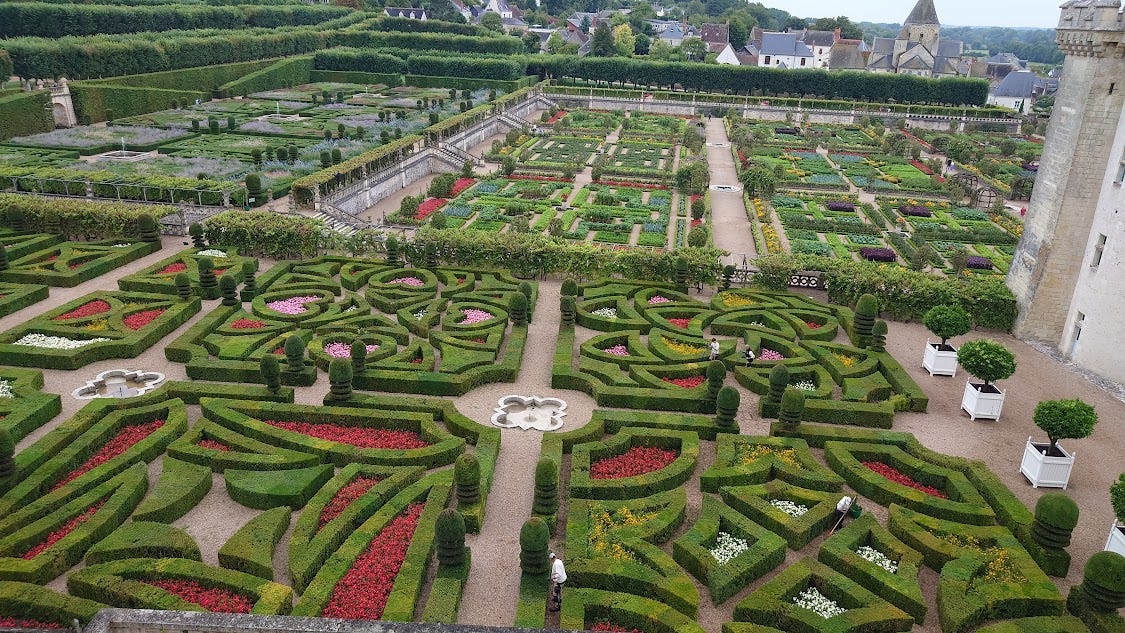This week I am kicking off with my visit to one of the most notable kitchen gardens in the world, with World Heritage Site status no less, the famous Villandry renaissance garden beside the River Loire, a few miles from Tours. And it didn’t disappoint.
First, a bit of history
Chateau Villandry was built during the 16th century around an old fort, which is notable for being the place where King Henry II of England conceded defeat to King Philip II of France in 1189 and agreed that his son Richard would become heir to the throne of England and marry Philip’s daughter. [This area is full of English medieval history. If you are fan of the film the Lion in Winter - Eleanor of Aquitaine, Henry II and Richard I are all entombed in Fontevrand Abbey, an hour away].
The chateau was confiscated during the revolution and in 1906 was bought by Joachim Carvallo and his wife the heiress Ann Coleman. They restored the chateau and created …





